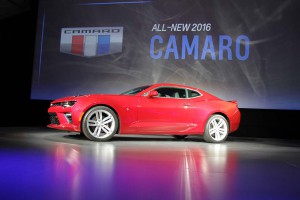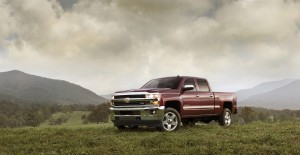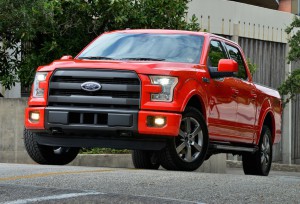Pressure to improve fuel economy in the face of tough new federal rules is forcing General Motors to put its future products on a diet – something that will also require a major change in its internal culture, said the maker’s global product development chief.
The new 2016 Chevrolet Camaro is an example of this shift in direction, said Executive Vice President Mark Reuss. In years past, each new product was heavier than the model it replaced. But the sixth-generation muscle car is 200 pounds lighter. Cutting mass, Reuss said, not only translates into a more fuel-efficient vehicle but one that is quicker and more nimble.
“It still needs to be a wicked fast track car,” he said. But Reuss added that, “I include efficiency in performance.”
GM is by no means the only maker to put an emphasis on what automotive engineers call lightweighting. Nissan has cut more than 80 pounds off its eighth-generation 2016 Maxima sports sedan. Ford Motor Co. took as much as 700 pounds off the mass of its 2015 F-150 pickup – largely through the shift to an aluminum-intensive body.
(Spy shots reveal the lighter, aluminum-intensive version of the next Ford SuperDuty trucks. Click Here for more.)
The new Camaro makes use of aluminum for its hood, windshield frame, suspension components and other parts. Earlier this month, meanwhile, GM announced a multi-billion dollar investment program in its manufacturing operations. Among other things, that is expected to allow it to increase the use of lightweight aluminum, as well.
(GM hints of switch to aluminum. Click Here for the story.)
The challenge, said Reuss, is to change the way GM’s designers and engineers think about new products
“Philosophically, it drives incredible intensity,” the product czar noted. “It drives an intense creative process inside of engineering. Instead of just carrying things over and adding (weight) to it, everything gets looked at to be the best. You can’t have waste,” Reuss added.
In turn, “When you have that type of efficiency in engineering, you get better quality,” Reuss said. “You provide more value to the customer to be better than the competition in the market place.” In turn, that can help GM attract more customers willing to pay a higher price for its products.
To achieve the shift in design, engineering and manufacturing, GM is stepping up its global investment program. Not only is it updating its assembly and component plants but pumping over $1 billion into its 60-year-old suburban Detroit technical center and a nearby proving grounds.
(Ford plans to expand use of super-light carbon fiber. Click Here for the latest.)
It’s critical, he told TheDetroitBureau.com, that the maker’s product development team have the latest tools to work with – and a creative environment “that makes them want to come to work every day.”
The eventual payoff will be a broad one, promised Reuss, noting that, “We’re putting just as much effort into our new Malibu and Cruze as we do into iconic cars” like the Camaro.
(Paul A. Eisenstein contributed to this report.)




That’s funny. When I started in engineering there in 1979, mass and cost were the primary considerations in vehicle design. Then again, we also had a safety group that analyzed any part design involved in vehicle safety. Mary and company wouldn’t be aware of that because none have any real engineering experience. Nice job though of spending a BILLION on the “new” camaro while somehow managing to make it look just like the old one.